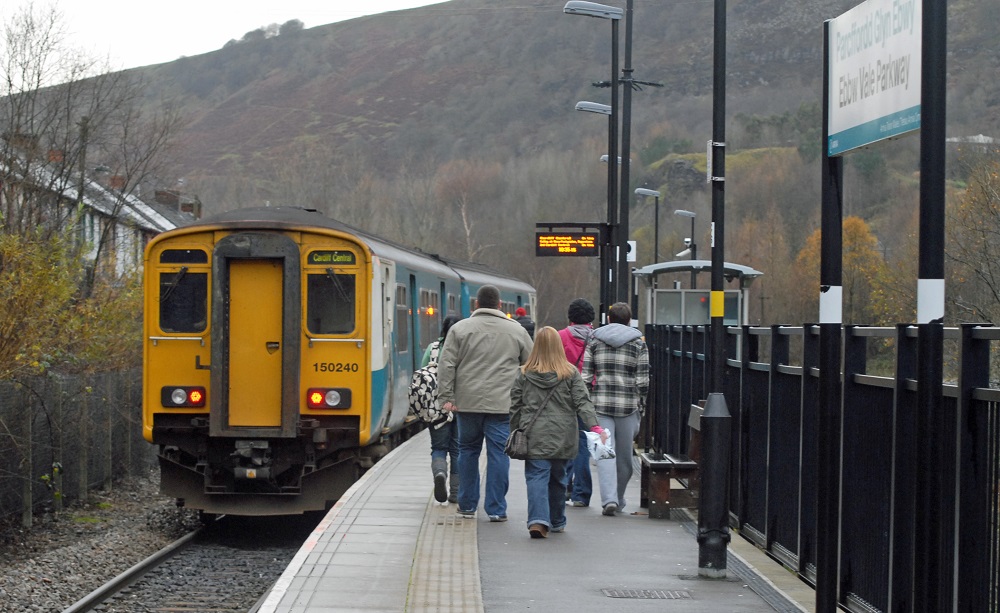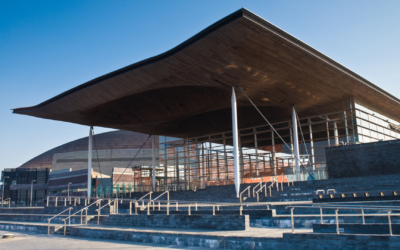 Economy
Economy 
The South Wales Metro has the potential to transform the Cardiff Capital Region – but only if there is a visionary strategy to ensure all places and people benefit, says Victoria Winckler.
A metro for south Wales is getting a step closer. All parties committed to its delivery in their manifestos, and the first steps are being taken to turn it into a reality.
The South Wales Metro has the potential to be a game-changer
It will cut travel times – something that’s greatly needed with a train journey from Merthyr to Cardiff currently taking over an hour station to station, with travel time to and from your destination on top. Suddenly, a trip that is frankly a real pain could in future be quite feasible.
Just as important, it will connect provide new towns and communities with a rail service. Places like Nelson, Maerdy and Hirwaun, all currently off-grid, will have fast, through services to the rest of the region. It is hard to overstate the impact for people who don’t have a car – at the moment if you live in Hirwaun you can get the bus to Merthyr, Aberdare or Glynneath, and that’s it.
And we can only hope that the new trains will be more comfortable than the ones we have at the moment – passengers might yet get wifi, working toilets and enough seats!
But on its own the Metro will not achieve a great deal.
Shorter journey times and comfy trains are all very well, but they only benefit people who are able and willing to travel. People who live some distance from a Metro station will still find the extra time and inconvenience too big a hurdle to jump, and so will simply miss out. A recent study commissioned by the Joseph Rowntree Foundation called these ‘disconnected communities’ – and found that such communities exist across the whole city region.
The same study also found that – hardly surprisingly – not all disconnected communities are the same. There is a world of difference between ‘disconnected’ places like Cowbridge or Gwaelod-y-Garth and disconnected places like Tylorstown or Phillipstown. So it’s not just geographical connectedness that matters but social connectedness too.
There’s also a risk that faster trains will simply mean that more people head to Cardiff, not only for work but for shopping and leisure too, leaving their home communities even worse off than before. While we hear a great deal about the alleged unwillingness of people in the valleys to travel to work, the stats show that it is in fact Cardiff residents who are the most shy about hopping over the city boundaries.
We need action to “make the most of the Metro”
If the Metro is to do more than mean that the middle classes can get to work quicker, there needs to be some active and imaginative action to make the most of this once-in-a-lifetime investment.
-
All communities must be connected to the Metro
Planners need to get out of their offices and make sure that the Metro is accessible from the heart of disadvantaged communities. They need to check access is easy by foot, by bike and with a buggy, and that it is OK to walk along on a wet Wednesday evening in November as well as in the day.
-
People need skills and awareness of opportunities
It’s all very well being able to travel to work but if people don’t have the right skills or experience it’s academic. So some careful working out of where the opportunities are and working with employers to build effective pathways into those occupations will be crucial. It’s not just low-level jobs either – there’s every reason to build pathways into higher-level roles too.
-
Travel must be affordable
Trains tend to be the preserve of people who are better off – those on low incomes are more likely to use the bus. Why? Because trains are expensive – the current £7.90 return fare to Cardiff from Merthyr is substantially more than an hour’s pay for a 21-24 year old on the minimum wage of £6.70. So a close look at peak-time offers will be critical.
Economic planning seems to have gone out of fashion – we don’t have a current one for Wales let alone Cardiff’s City Region. Can you imagine a big corp like Coca Cola or EE not having any sort of business plan and just leaving it to the market? It seems obvious that if you don’t know where you’re going and how you’re going to get there chances are you’ll go around in circles.
Many years ago, we called for a strategy to accompany the dualling of the A465 – the result was the Heads of the Valleys Programme – useful at the time although it has fizzled out.
So if the Metro is to really make a difference, then it must not be implemented in a vacuum – it needs to go hand in hand with a strategy.
Victoria Winckler is Director of the Bevan Foundation.


